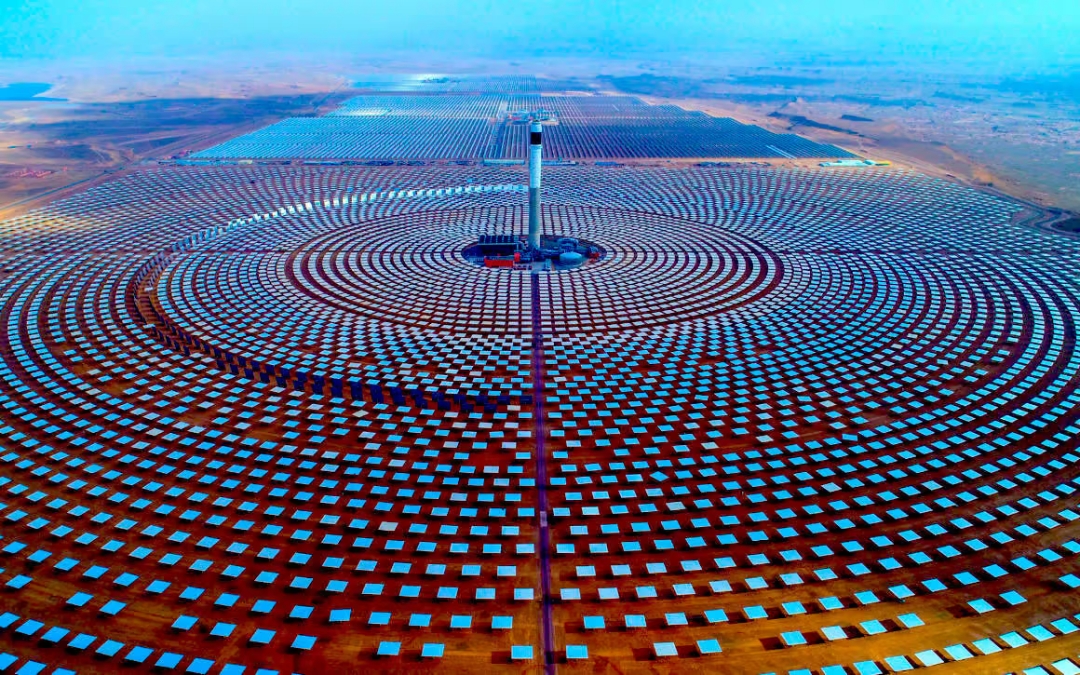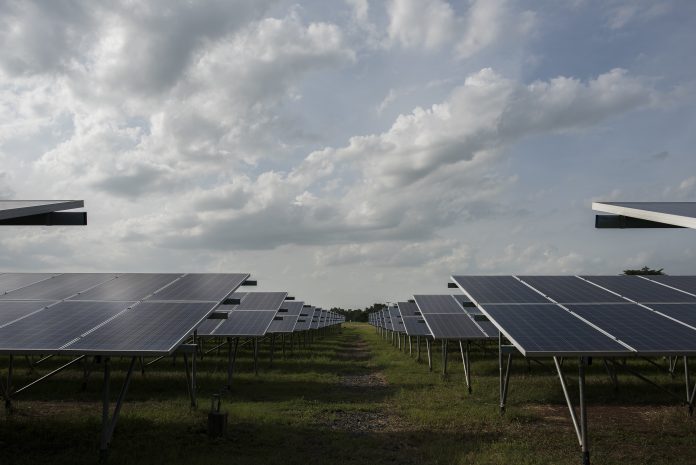Ghana’s President John Dramani Mahama on 6 November 2025 cut the sod for a utility-scale solar park at Agortor in the Dawa Industrial Enclave, launching what developers say will begin as a 200-megawatt private solar installation, the first phase delivering 100 MW by December 2026 and expanding to 1,000 MW by 2032, intended to supply dedicated power to industrial users and anchor Ghana’s push toward a “clean industrial revolution.”
The project, led by Solar for Industries (a unit of LMI Holdings) and backed by partners including the International Finance Corporation and international EPC contractors, is billed as a cornerstone of government plans for energy sovereignty, a 24-hour economy and faster industrialization.
Ghana’s grid had roughly 5,200–5,750 megawatts of installed generation capacity in recent years; a 100 MW plant therefore represents about 1.8–2 percent of today’s national fleet, a meaningful increment for a single private project aimed at industry. Scaling to 1,000 MW would mark a structural change: an addition on that order would equal between one-fifth and a quarter of current installed capacity, shifting where and how energy is produced and used across the economy. The Dawa project is neither symbolic nor merely incremental: it is designed to demonstrate that large, privately financed renewable capacity can be embedded inside industrial enclaves to supply continuous, competitively priced power.
Project developers say the first tranche will unlock preferential industrial tariffs, a 10 percent discount for enclave users has been mentioned in project briefings, and provide steady baseload replacement for expensive thermal generation that now dominates Ghana’s mix. For an industrial firm, predictable power priced below volatile diesel or gas alternatives can change investment calculus: factories that could not operate reliably for 24-hour production lines suddenly find continuous operations viable, input costs fall, and export competitiveness improves.
For the broader system, replacing a portion of thermal generation with contracted solar reduces exposure to fuel price shocks and to the fiscal stress of sector arrears that have dogged Ghana’s utilities.
The Dawa installation also sits inside a deeper continental narrative: African governments are increasingly looking to utility-scale renewables not only to meet climate targets but to underpin industrial policy. Ghana’s stated aspiration to lift the share of renewables in its mix and to target utility-scale solar additions is consistent with national plans that envisage several hundred megawatts more solar by 2030.
Neighboring and regional examples show the ambition is shared: Morocco and South Africa have deployed large solar arrays alongside storage, while other West African states are advancing projects to stabilize power for export-oriented industry. If executed, Dawa would both signal investor confidence and provide an operational model for bundling generation capacity with special economic zones.

The project also surfaces practical frictions that will determine whether the promise becomes durable. Large private renewables in Africa still contend with currency and offtake risk, permitting and interconnection delays, and the perennial challenge of sector indebtedness. Ghana’s power sector has battled arrears and financial stress that, if not resolved, can erode the bankability of long-term power purchase agreements.
Moreover, integrating hundreds of megawatts of intermittent generation into grids designed around thermal and hydro capacity requires upgrades to dispatch, storage and transmission. The announcement therefore shifts attention from ceremonial ground-breaking to the hard work of contracts, regulatory clarity and grid reinforcements that regional experts say often determine whether projects deliver at scale.
From an economic-development lens, the Agortor project is being framed as part of a 24-hour economy strategy, a national effort to keep factories producing around the clock to raise output and employment. That linkage is persuasive only if the supply is reliable, affordable and accompanied by industry support measures: logistics, customs facilitation inside enclaves, and workforce training. The project’s backers emphasize integrated planning: siting generation next to industrial demand reduces transmission losses, enables contract structures tied to industrial tariffs, and can catalyze local manufacturing of components, from panels to electrical equipment.
For the state, the calculus is that cleaner, cheaper power can broaden the tax base and support export growth; for investors, it is about lowering operational risk. The friction point will be ensuring that contract terms, debt service, and foreign investor protections do not crowd out domestic industrial gains.
Read also: The future of Climate innovation is in Africa
There are environmental and social trade-offs to confront as well. Large solar parks require land and water for cleaning and maintenance; the developers and state have signaled reforestation and river protection measures in parallel programmes, but implementation will need local buy-in. Community engagement, transparent benefit-sharing and credible biodiversity assessments will be essential if the project is to avoid repeating patterns where energy expansion displaces livelihoods or triggers local resistance. The political economy is acute: projects that incorporate vocational hiring quotas, local supply-chain content and clearly articulated community benefits tend to face fewer delays and attract smoother local support.
If Dawa Industrial Zone does scale to the megawatt ambitions on paper, it will change sector metrics. Ten-hundred megawatts of contracted private renewables inside industrial enclaves would reduce thermal dependence, improve emission profiles for export goods, and create a model that other African states might replicate as they pursue both industrialization and climate commitments. However, the road from ceremony to commissioning is long: financing finalization, grid upgrades, workforce development and governance reforms will determine whether Ghana’s solar project becomes a prototype for an African industrial energy transition, or a high-profile project that struggles to move the needle on structural constraints.
Engage with us on LinkedIn: Africa Sustainability Matters





